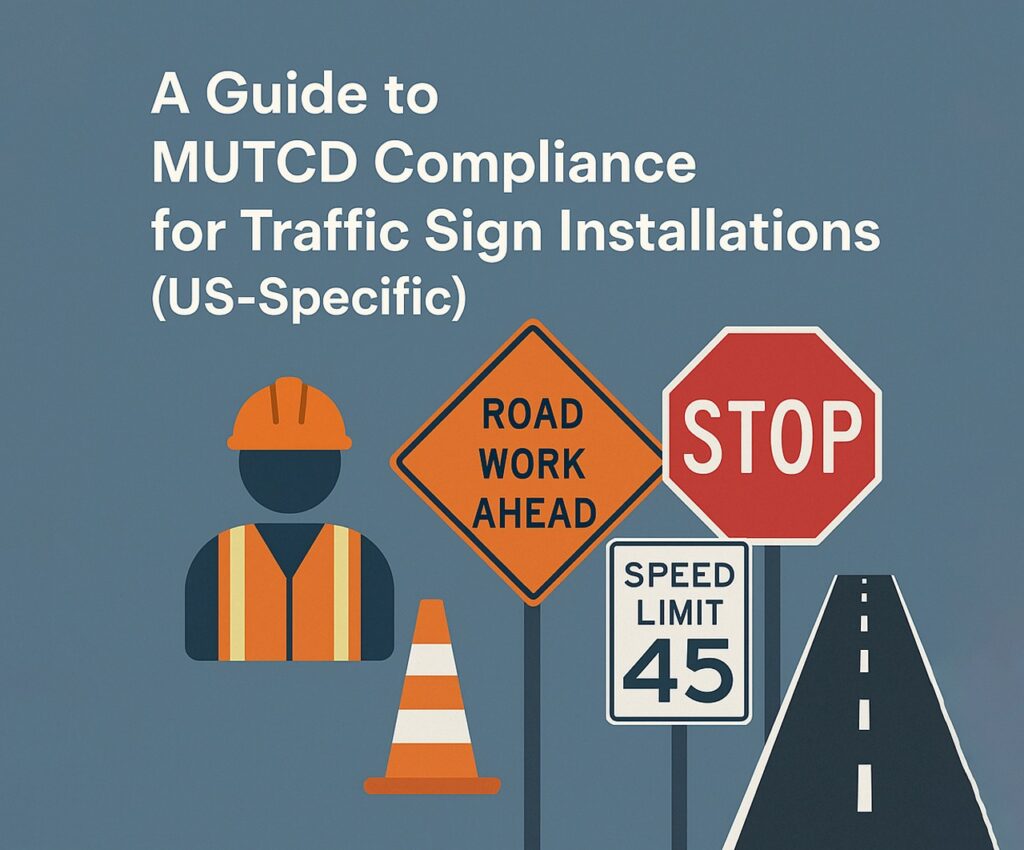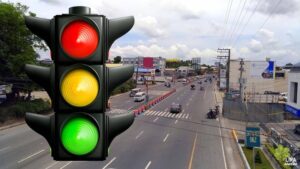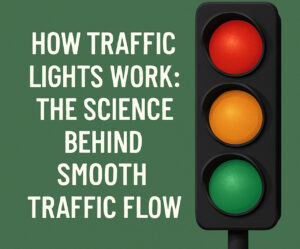Every mile of American roadway tells a story—not just in how it’s traveled, but in how it’s marked. From busy intersections to rural stretches, road traffic signs, whether a one way traffic sign or a two way traffic sign, are the backbone of safe and efficient navigation. To ensure consistency and clarity across all U.S. roads, the Federal Highway Administration established the Manual on Uniform Traffic Control Devices (MUTCD). If you’re installing signs or managing infrastructure, MUTCD compliance isn’t optional—it’s the law, and it’s vital for public safety.
This guide breaks down what MUTCD compliance means, what it covers, and how to make sure your road traffic signs meet standards for legal enforcement and visual clarity. Know more..
What Is the MUTCD?
The MUTCD sets the national standard for all traffic control devices, including signs, pavement markings, and signals. Its goal is to ensure uniformity across every state so that drivers encounter familiar symbols and guidance, no matter where they are.
Compliance with the MUTCD ensures your one way traffic sign or two way traffic sign isn’t just effective, but legally enforceable. States can adopt the MUTCD as-is or with modifications—but in every case, it remains the baseline for traffic sign design and placement.
Why MUTCD Compliance Matters
Failing to comply with MUTCD standards can result in:
- Legal liability in the event of an accident
- Insurance complications
- Federal funding loss for roadway projects
- Public confusion and increased crash risk
Whether you’re placing a single one way traffic sign in a new subdivision or hundreds of road traffic signs on a multi-lane expansion, the principles are the same.
Categories of Traffic Signs Under MUTCD
MUTCD categorizes road traffic signs into three major types:
- Regulatory Signs – These enforce laws. Examples include the one way traffic sign, stop signs, and speed limit signs.
- Warning Signs – These alert drivers to hazards (e.g., curve ahead, pedestrian crossing).
- Guide Signs – These give directional or location information (e.g., exit signs, highway markers).
Even a basic two way traffic sign belongs to a specific MUTCD classification and must follow precise rules for color, shape, size, and reflectivity.
Key MUTCD Compliance Features
To be compliant, your road traffic signs must adhere to specific MUTCD rules related to:
1. Design Standards
Each sign must meet design specs including:
- Shape (e.g., rectangular for regulatory, diamond for warning)
- Color (e.g., red for stop, yellow for warning)
- Typeface (FHWA Series fonts)
- Symbol usage
Your one way traffic sign or two way traffic sign must use MUTCD-approved icons and layout formats to ensure clarity for all road users.
2. Size Requirements
Sign size depends on the road classification and speed limit. Larger signs are required on high-speed roads or where visibility might be compromised.
For example:
- One way traffic sign on a local road: 18″ x 24″
- On a freeway: up to 36″ x 48″
3. Retroreflectivity
All road traffic signs must be visible day and night. This means using materials with retroreflective sheeting or external lighting.
The MUTCD defines minimum reflectivity levels for various sign categories, ensuring legibility even in low-light conditions.
4. Placement Guidelines
Signs must be installed in locations where they are clearly visible and give drivers adequate time to react.
MUTCD outlines placement rules including:
- Lateral and vertical clearance
- Mounting height (generally 5-7 feet in urban areas)
- Distance from the road edge
For instance, a two way traffic sign alerting of an upcoming merge should be placed well before the actual transition begins.
State-Specific Adjustments
Though the MUTCD is a federal document, each state may publish its own version, incorporating additional details or design elements.
Be sure to check:
- Your state’s Department of Transportation manual
- Local municipal codes that may impact sign design or location
A compliant one way traffic sign in California may differ slightly from one in Florida—but both must follow MUTCD core standards.
Special Use Cases
Some road traffic signs have unique guidelines. For example:
- School zone signs require fluorescent yellow-green backgrounds
- Temporary traffic control signs must follow Part 6 of the MUTCD
- High-crash corridors may demand larger or double-mounted signs
Every time you install a two way traffic sign on a newly reconstructed road or a one way traffic sign on a detour route, MUTCD guidance applies.
Maintaining MUTCD Compliance Over Time
It’s not enough to install compliant signs—you must also maintain them.
- Regular Inspections Conduct scheduled checks to look for fading, vandalism, obstruction, or reflectivity loss.
- Inventory Management Track the age, location, and condition of every road traffic sign in your network.
- Retroreflectivity Upgrades MUTCD requires agencies to have a method for maintaining sign reflectivity. Common methods include:
- Visual nighttime inspections
- Measuring devices
- Blanket replacement schedules
Digital and Smart Signage
While traditional road traffic signs remain dominant, digital and programmable signs are rising. MUTCD compliance is evolving to incorporate these technologies.
For now, electronic one way traffic sign or two way traffic sign formats must:
- Use approved messages and symbols
- Maintain appropriate brightness levels
- Avoid distraction or confusion
The MUTCD has specific sections covering variable message signs and dynamic guidance tools.
Training and Certification
Professionals installing or maintaining road traffic signs should complete MUTCD training. Many states and federal programs offer certifications for:
- Traffic sign installation
- Work zone safety
- Sign retroreflectivity assessment
Training helps ensure every one way traffic sign you install will stand up to both scrutiny and real-world use.
Final Word: Why Compliance Is Non-Negotiable
When done right, installing a two way traffic sign or one way traffic sign might seem like a small task. But behind every post and bolt is a layered structure of safety standards, visibility science, and federal law.
By ensuring MUTCD compliance across all your road traffic signs, you not only meet legal requirements—you actively protect drivers, reduce risk, and contribute to smoother traffic flow.
So whether you’re working on a citywide traffic upgrade or replacing signs in a rural area, follow the MUTCD every step of the way. The roads—and the people who drive them—depend on it.





